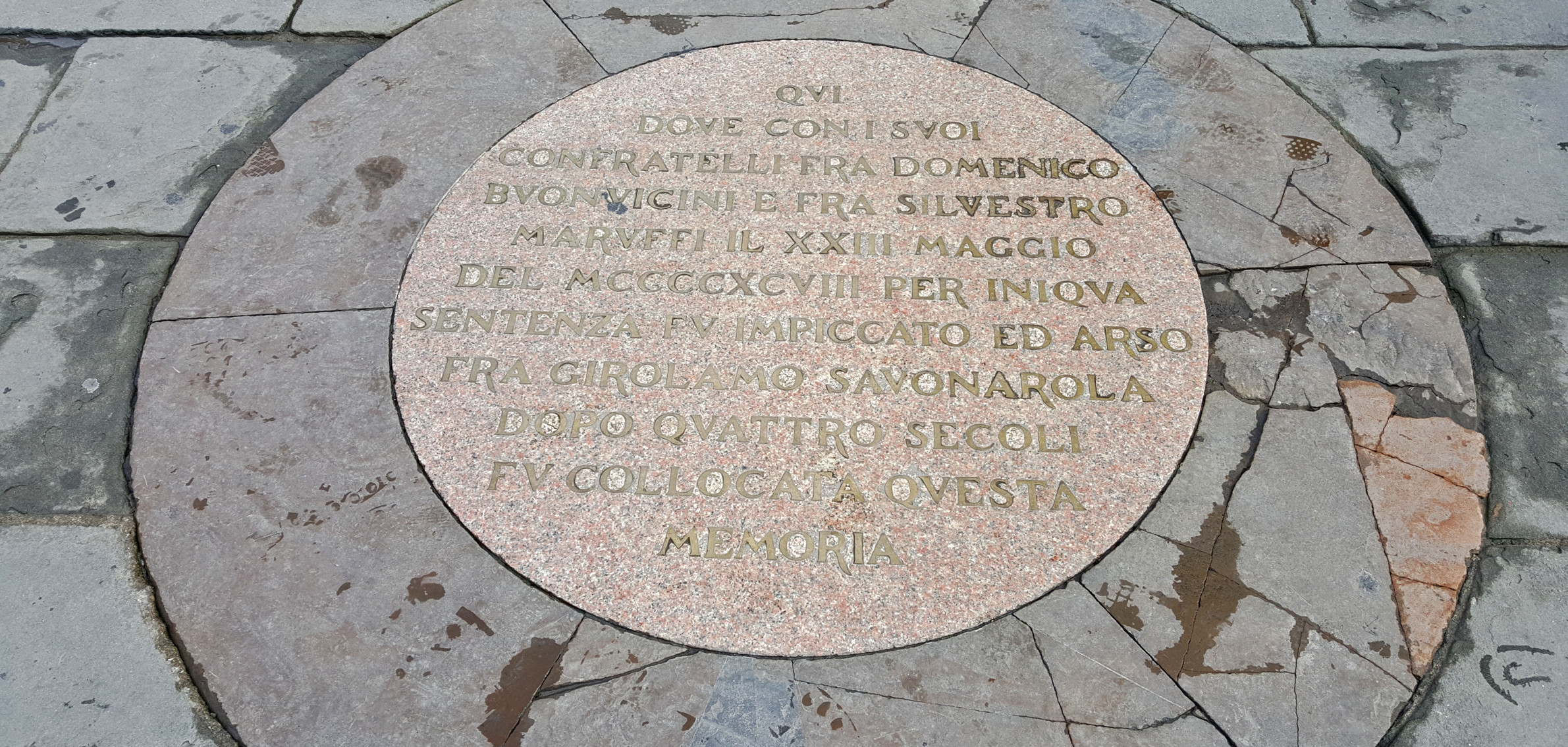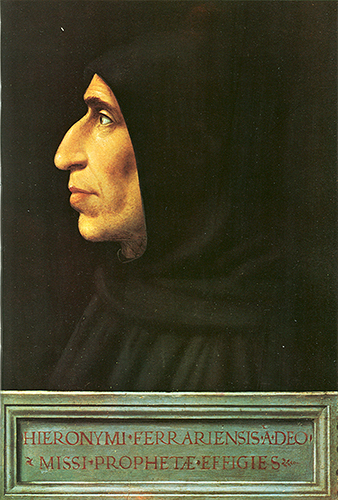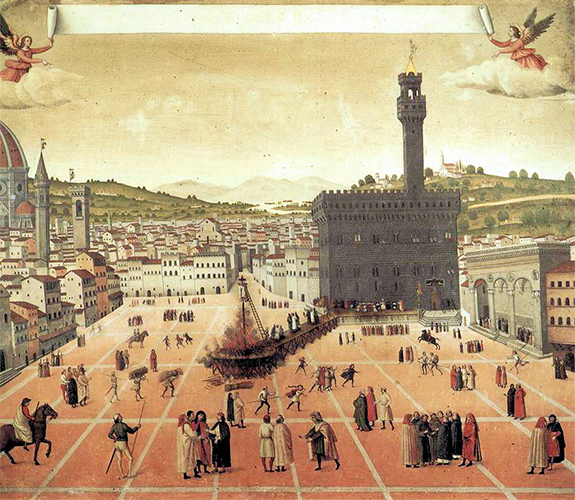
Girolamo Savonarola: a herethic in Florence
Florence
is a place full of history and stories, and sometimes, without even realizing
it, we find ourselves walking right upon them.
This might have happened in Piazza della
Signoria, where a large marble
plaque set in the paving of the square, right in front of the fountain of
Neptune, reminds us of an event that took place centuries ago, that had as
protagonist a friar called Girolamo
Savonarola.
Savonarola was born in Ferrara in 1451, he interrupted his studies of medicine
to dedicate his time to theology, and in 1482, he was sento to the convent of
San Marco, appointed to preach
from the pulpits of the Florentine churches.
At first he was not much appreciated, because of its Romagna accent and for his
preachings, extremely rigid towards the church and the city from the very
beginning; he even predicted the arrival of a scourge caused by the sins of men
and the bad pastors of the Church.
Little by little, however, he gained the support of the
poorest population and of the opponents of the Medici family, by preaching
in front Palazzo Vecchio, affirming that all
the good and the bad of a city came from corrupt leaders, who exploited the
poor and imposed upon them heavy taxes.
Lorenzo the Magnificent warned
him several times not to hold such sermons, but the Dominican
friar never listened to him, on the contrary, in another sermon he predicted
his end: "I am a stranger and he is
a citizen and the first of the city, I have to stay and he has to go”.
Savonarola not only rebelled against the master of Florence, but also
against the Pope Alexander VI, who had tried to forbid him to preach, but had
been forced to revoke all the measures issued against the friar due to pressure
received from the Florentines who had been bewitched by his sermons.

Sermon after sermon, Savonarola became politically influent, and during the
Republic established in 1494 – following the temporary expulsion of the Medici
from the city - he had the taverns closed, and the prostitutes driven away from
Florence.
In 1497 Savonarola organized a bonfire
of vanities in Florence, burning artworks, paintings with pagan
content, luxurious clothes and jewelry.
He had created a new democracy, free of the corruption of the powerful but
where reigned just another type of dictator.
Soon
came the Pope's excommunication,
which eventually turned out to be a fake forged only to destroy the friar; but
Savonarola continued his campaign against the sins of the Church nonetheless.
The Florentine Republic backed him up at first, but then took away this support
out of fear of a papal interdiction, and the
restored party of the Medici had him arrested and tried for heresy in 1498.
The friar had no intention of surrendering and had barricaded himself in the
convent of San Marco.
A fight raged throughout the night, until Savonarola was captured and taken to
the Tower of Arnolfo in Palazzo Vecchio, where he underwent interrogations and torture: the torture
of the rope, that of the fire under his feet and he was then placed for a whole
day on the streckbank, that caused dislocations on his whole body.
On May 23, 1498, he was sent to
the gallows, that stood five meters high on a pile of wood in
Piazza della Signoria. There, Savonarola was hanged and burned at the stake
alongside two other friars.

The ashes were taken away and thrown into the Arno river from Ponte Vecchio,
though a few followers of Savonarola did try to steal some of it: noblewomen
dressed as servants, came to the square with vases to collect the ashes, saying
they wanted to use it to do their laundry.
Overnight, someone decided to pay tribute to the preacher’s memory, by covering
with flowers the place where the execution had taken place, starting the tradition of la Fiorita: on the exact spot where Savonarola was burned, rose
petals are scattered and during a ceremony that starts with a mass in the
Chapel of the Priors of Palazzo Vecchio and ends with a parade towards Ponte
Vecchio, the rose petals are thrown into the Arno river.
After centuries, the marble plaque still reminds us of that day that saw the
end of Girolamo Savonarola, a discussed character, it’s true, but also a man
who was not afraid to preaching “new things” and denounce the corruption of
those in power, even when it meant denouncing the Church itself.



